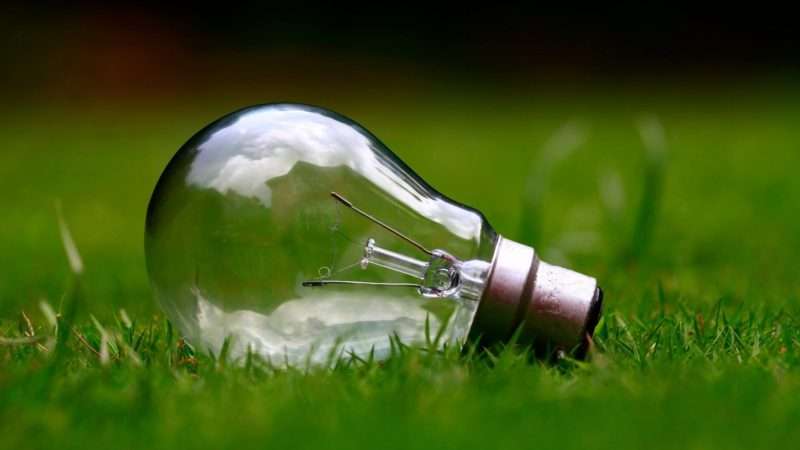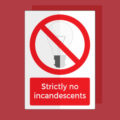We know it’s early, but why wait until spring to get some of your spring cleaning out of the way? Light bulbs are magnets for dust, and as well as making light fittings look a little tired, dust build-up can have a big effect on their performance.
It might not be high on your to-do list, but freshening up your lighting now will give you more time outdoors when the weather turns nice. Below are a few quick and easy steps to help you breathe new life into your lighting.
A quick guide to replacing light bulbs
The easiest way to clean light bulbs is to remove them from the fixture, but ensure the power is switched off before you do. If you’ve never changed a particular light bulb before, or you’re not sure which type of cap it has, it will need very careful handling to find out.
Most standard light bulbs in the UK will have one of two types of cap: bayonet cap (BC) or Edison screw (ES). As their name suggests, ES light bulbs simply screw into the fitting, so to remove one, use a soft cloth to grasp it firmly (but without squeezing the light bulb too hard), and turn it anticlockwise. If it is an ES light bulb, you should start to feel it turn without too much resistance. If it doesn’t turn, don’t force it, as the light bulb could break and the light fitting could be damaged.
Replacing an ES light bulb in its fitting is just as simple: simply screw it clockwise into the fixture as far as it will go. Again, don’t force the light bulb into the fixture. If you feel resistance before it has been properly screwed in, remove the light bulb, check there are no blockages in the fitting and try again.
If you’ve tried the above and the light bulb doesn’t move, it probably means the fitting holds a BC light bulb. To remove this type of light bulb, grasp it with a cloth and push it gently into the fitting (e.g. upwards towards the ceiling if it is a ceiling light). You should feel it give a little. Keeping it pushed in, turn the light bulb anticlockwise until it pops out of the fitting.
Once you have removed a BC light bulb, you will notice two prongs sticking out horizontally from its base. To replace the light bulb, line these prongs up with the slots in the fitting, push gently, and turn the light bulb clockwise. If the light bulb won’t turn, you’ve either not lined the prongs up correctly, or you’re not quite pushing the light bulb in firmly enough.
There are different variants of Edison screw and bayonet cap light bulbs, such as small bayonet cap and giant Edison screw, and they are all removed using the respective methods above.
Dust the light bulbs off
Once you have removed the light bulb from its fitting, clean it by giving it a wipe with a dry microfibre cloth. Avoid using abrasive materials, water, or cleaning sprays and polishes, as they could damage the light bulb. Even damp cloths should be avoided, as water ingress would almost certainly cause issues with the light bulb.
Repeat the same steps for light fittings and shades; if you use cleaning products or damp cloth at this point, just make sure no moisture gets into the fitting itself. Uplighting lamps shades can collect a lot of dust, so if possible, use a hoover to collect the excess before you wipe the shade clean.
Certain other light fittings may need a little more cleaning. Cooker hood light bulbs, for example, can collect a lot of grease, so may need a wipe with a damp cloth. Most cooker hood fittings are enclosed, but the same rule applies: ensure no moisture gets into the fitting itself. The same goes for under cabinet lighting and recessed spotlights.
Note: when handling halogen light bulbs, don’t touch the light bulb with your bare hands. The natural oil from your skin will create a ‘hot spot’ when it comes into contact with the surface of the light bulb, potentially reducing its lifespan. Wear gloves or use a cloth when handling halogen light bulbs to avoid this.
Replace those faulty light bulbs and fittings
While you’re removing light bulbs, you might as well replace any that are no longer working. LED light bulbs offer an energy-efficient alternative to traditional incandescent light bulbs, meaning that once they are installed, it will be years before you need to replace them again. There is an LED equivalent to almost every type of incandescent light bulb. See our guide to Potential LED Savings for more information about how much money LED light bulbs could save you.
When disposing of your old light bulbs, consider recycling them. Old LED light bulbs can be recycled at local waste disposal centres. So too can fluorescent lights, including CFL light bulbs (Compact Fluorescent Lamps). These shouldn’t be disposed of in your normal household waste, as the trace amounts of mercury they contain can be harmful to the environment. Instead, make sure these light bulbs are recycled by depositing them at local collection points. This handy locator can help you find your nearest collection point.
Clean your outdoor lighting
Dirt will naturally build up on outdoor lights much more than indoor lighting, so they may need a little more love to freshen up again. Cleaning outdoor lights is most important for solar lights, as they may not function properly if their solar cells are covered by a layer of dirt. Wiping the outside surface with a damp cloth should do the trick if the light isn’t too muddy, while a deeper clean may require some disassembly, but will yield even better results. This helpful guide from doityourself.com goes into detail on how to do this.
Floodlights might not need much cleaning, thanks to their elevated position, and as good ones are built to be particularly bright, any dirt that does settle might not noticeably affect its output anyway. A quick wipe of the lens with a microfibre cloth should be enough to clean it. Use a stable ladder to reach the lights, rather than stretching out of bedroom windows to clean them.




